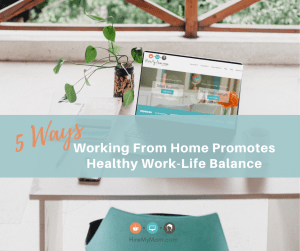This is How You Work from Home With Kids

When you work at home, carving out quiet time to do professional work is always challenging, especially when your kids are off school for a break or too young to attend school. This issue is now more acute than ever as many school-age children learn from home or attend school on partial schedules due to COVID-19.
Here are some ideas for keeping the kids busy so you can get work done each day.
Consider Child Care
I realize this is easier said than done. There’s often an expense associated with child care. What’s more, bringing new people into your bubble can open up health concerns. But, child care doesn’t have to be a full-time daycare or nanny situation. Several creative options are available for child care, which can be right for you and your kids.
Non-Traditional Sources of Child Care
Here are some out-of-the-box ways to find help:
- Form a pod with another family and take turns on kid duty a few hours each day or every other day, giving each set of adults a chance to work kid-free.
- Look for a local student who is home from college and could provide a few hours of support each week. Perhaps you can even find an education major who can tutor older children for college credit.
- Ask a neighbor to consider swapping tasks with you–trading a few hours of child care for a service you’d be happy to provide like shopping, cooking, or organizing.
Nanny Sharing
Consider sharing a nanny if you’d like a more traditional route but don’t need full-time care. Nannies can be very expensive, but sharing one with another family makes it more affordable. Partner with another family (or two) to share one nanny with each of you taking different days/hours. Or, have the nanny take all the kids to alternating houses throughout the week. This type of set up makes it easier to find a professional, full-time nanny without having to shoulder the expense on your own.
If you embark upon this path, here are some tips for success:
- Agree on a general framework for hours and days at the outset. This type of arrangement works better when everyone is on the same page in terms of schedules.
- Be prepared to be flexible. Even the best-laid plans are bound to go awry occasionally, so enter into the arrangement knowing that you may need to make sacrifices based on the other family’s schedule and feel comfortable that they will do the same for you when the need arises.
- Establish protocols for kid behavior and expectations. For example, will kids do school work with the nanny? What about watching television? Do you expect the nanny to supervise while the kids play or actively engage them in activities? Discussing these topics in advance can ensure a smoother partnership.
- Make plans to address what you’ll all do if one of you is sick or exposed to COVID-19 and needs to quarantine. It’s best to partner with a family and a nanny who shares your perspective on the associated risk and right mitigation actions until the threat passes.
Encourage Your Kids to Play Independently
If child care isn’t in the cards for you, encourage your kids to play independently or with siblings. Many children can play quietly with a bit of guidance. Don’t feel bad about asking your kids to play alone. It’s a chance for them to develop essential skills and learn to be independent. But, be realistic about how long you expect them to play on their own. Here are some ideas:
- Older babies can play happily in a pack-and-play or a stand-up activity center.
- If your kids are young, set up an area where they can quickly reach a few essential toys and play independently while you supervise from a distance.
- If your kids are older, encourage them to use quiet toys, like puzzles or coloring books, while you work. Ask them to select ones that interest them and set a timer to help them manage the time on their own.
- Books are a great pastime for kids, those who know how to read, and those just learning to read. Encourage 30 minutes of reading while you power through some emails or return calls.
- Let older kids play outside in your yard — they will have a ball and come in tired.
- Consider showing a kid-friendly matinee movie each afternoon, so you have a concrete block of time each day.
Need more ideas for independent playtime, check out this blog that contains 105 activities to keep kids entertained while you work.
Consider Online Resources
Several online resources are available to help keep kids engaged and learning. A quick Google search for online learning will reveal a universe of online options to help your kids learn and grow. For example:
- Khan Academy is free and aimed at assisting K-12 students in learning specific subject matter.
- ABC Mouse is designed for younger kids and helps build fundamentals.
- Outschool includes specialty classes that capture kids’ interests with a fun focus. Recent offerings include sharks, Godzilla, and Writers Workshops.
Although many moms feel a twinge of guilt by relying on screens, sometimes it’s the best option for finding the balance in work-at-home life. You can always enlist time monitoring apps like Kidslox and Bark to ensure that a little screen time doesn’t turn into a full-day affair.
Know You Aren’t Alone
The combination of working from home and caring for children can feel like a lonely uphill slog. You aren’t alone, though. Millions of other moms are in the same boat and experiencing the same frustrations and challenges you are. Remember, it is challenging to work at home and keep kids occupied. Struggling is a normal part of the process. But, with some creativity and planning, it’s possible to survive and even thrive through this stage.
It always helps to hear the stories of others. Join our Community of moms working from home and share your struggles, ideas or best tips for keeping kids busy while you take care of business.









